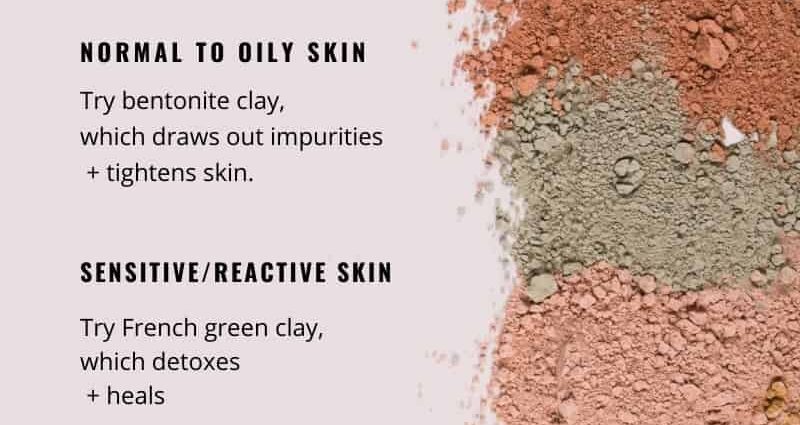Contents
White clay: benefits, use
In the world of beauty, naturalness is more fashionable than ever and certain active ingredients are better known… This is the case with white clay. Multifunctional, this ingredient collects the benefits, which also explains the reason for its presence in many formulas. Known as the softest and purest of clays, find out in this article what characterizes it, what are its properties, for whom it is suitable and how to use it. To your notes!
White clay: what is it?
Also called kaolin (in reference to the Chinese city where it was discovered), white clay is extracted from quarries before being dried and crushed so that the richness of its properties is preserved. Recognizable by its white color – which can slightly turn gray and due to its mineral composition – this powder is distinguished by its softness and purity. Particularly rich in silica and mineral salts (iron, zinc, potassium, magnesium, calcium, etc.), white clay, in its superfine version, is very popular for cosmetic use.
What are the properties of white clay?
Like other types of clay, white clay is known for its absorbent, remineralizing and detoxifying properties, but its actions are not limited to that. Indeed, thanks to its great purity, white clay can also be used in order to mattify, soften, tone and heal the skin. But what makes it truly unique is above all its great softness which allows it to be used on all skin types, unlike other kinds of clay that may be considered too aggressive. The secret of white clay lies in the fact that it purifies and cleanses the skin in depth, while preserving its hydration.
White clay: for whom?
Unlike green clay – which is generally recommended more for oily skin – white clay is universal and is ideal for use on dry to very dry, delicate and sensitive or irritated skin. Obviously, its softness, its neutrality as well as its purity are not for nothing. Good news for these types of skin, which may also need to be purified, but which often have difficulty relying on active ingredients that do not weaken them further. White clay seems to be the perfect alternative.
How to use white clay on the skin?
Mask, soap, poultice, cream… White clay can be used in many forms so that the skin benefits from its purifying properties. It can be combined with mineral water, vegetable oils, hydrosols, plant powders, or even a few drops of essential oils (to be used with care)… To be chosen according to the texture and the desired effects.
The most classic white clay treatment is undoubtedly the mask. To make it, you are going to need white clay powder and mineral water (which you can also replace with rose water). In a bowl, pour the desired amount of clay before adding the water and mixing everything until you obtain a paste that is neither too liquid nor too thick. To carry out this preparation, we recommend that you avoid utensils made of iron or oxidizable metals, which may affect the properties of the clay. Then apply the mixture to your face before letting it sit and rinsing off thoroughly.
Warning : a clay is never allowed to dry completely at the risk of drying out the skin and causing the appearance of redness and irritation. This is why, as soon as the clay begins to harden, it is essential to remove it or to moisten it again using a mist sprayer (in the event that you wish to leave your mask on for longer).
The other benefits of white clay
Beyond the properties that white clay has for the skin, this active ingredient can also be used to take care of hair. Indeed, it turns out to be the ally of irritated scalps that tend to regrease quickly. It is thanks to its sanitizing and absorbent properties, as well as its softness, that the white clay will have the art of absorbing the excess sebum produced and promoting the elimination of dandruff, without drying or the lengths nor the scalp (which on the contrary will be soothed).
To do this, nothing beats the effectiveness of a white clay mask. It is then sufficient to mix the powder with lukewarm water before applying the creamy paste thus obtained directly at the roots, on damp hair. Then wrap your head in a damp towel – to prevent the clay from drying out – leave it on for about fifteen minutes, then rinse thoroughly with clean water before shampooing.
Good to know : white clay can also be used for its antiperspirant properties on areas such as the armpits, but also in addition to toothpaste for optimal tooth brushing.










